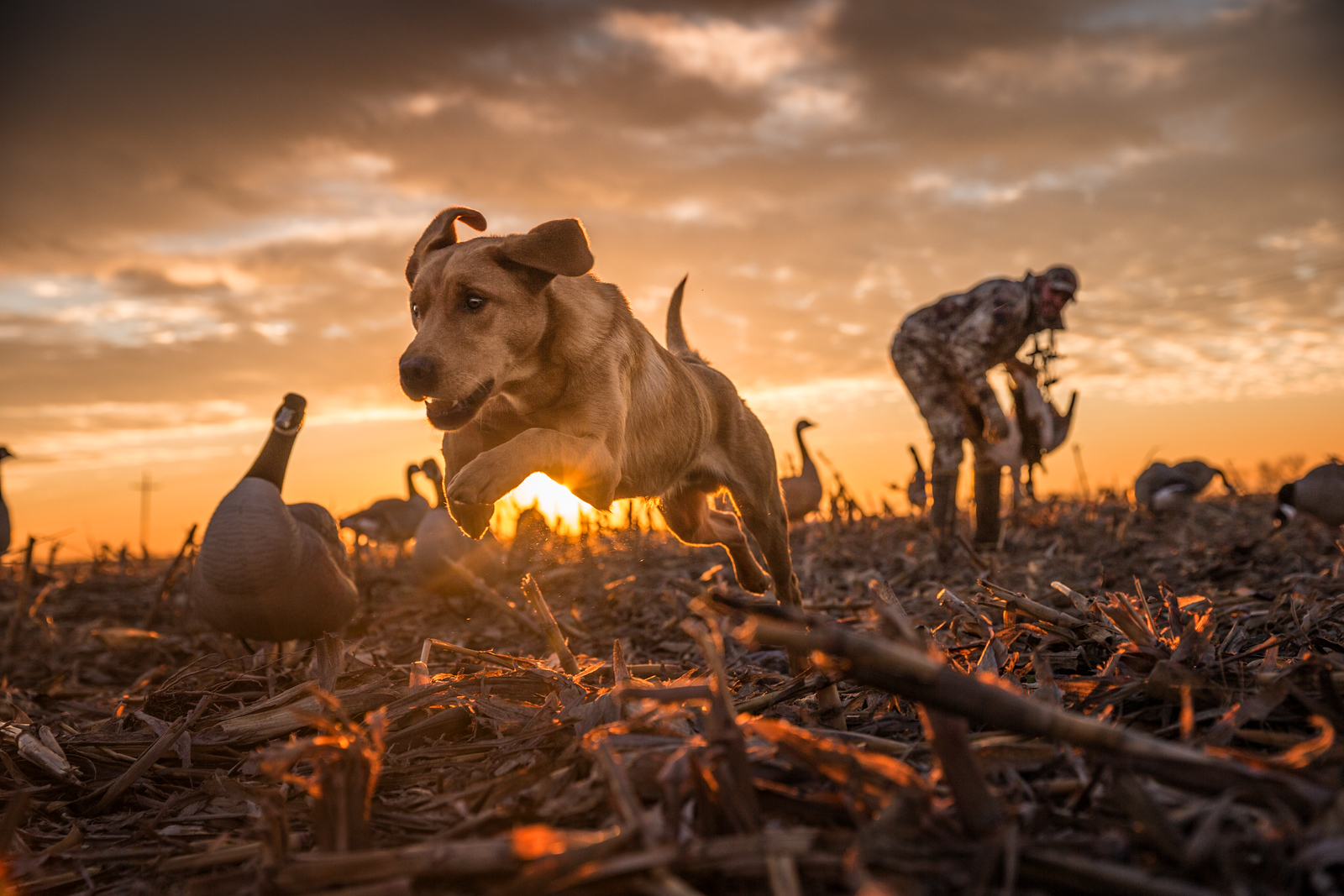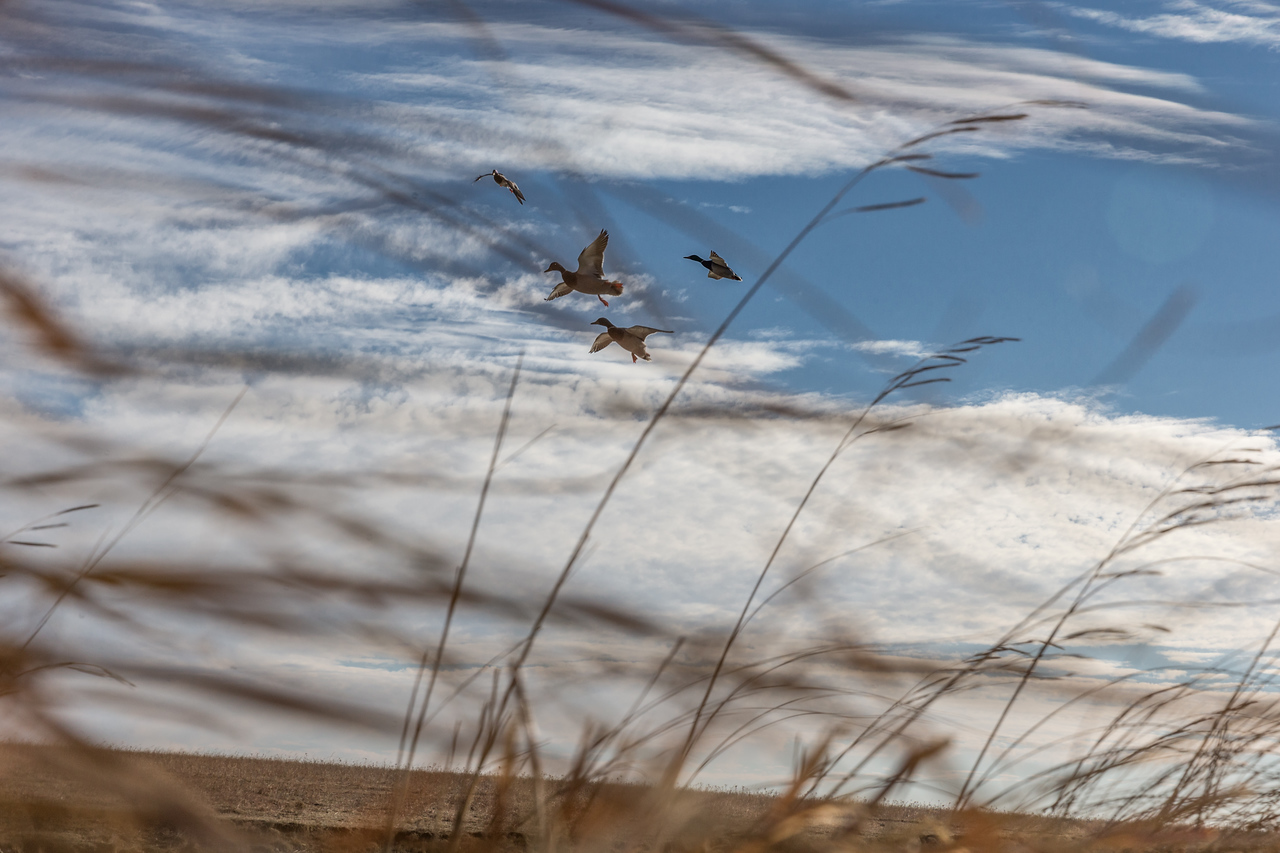Your Dog Needs To Know How To Retrieve Marks and Blinds

Coming out of duck season, did you have any epic moments that ended with fist pumps and high-fives around the blind? If so, it's likely your dog ran both marked and blind retrieves. These retrieves are common in hunting scenarios, and training your dog for both is crucial to developing a well-rounded gundog.
A marked retrieve is when your dog can visually see the object (like a bird) fall and knows where it is. In contrast, a blind retrieve is when the dog doesn't see the object fall and must rely on your guidance to find it. Understanding the differences between these retrieves and how to train for each is essential for effective hunting and developing a top-notch gundog.
Making Your Dog a Marking Pro
Two seasons ago, I was on a goose hunt with friends in Arkansas, targeting Speckled Belly Geese. Unexpectedly, we decoyed a flock of snow geese, and one wounded bird sailed out about 400 yards into a cut bean field. “Did he mark that?” my friend Aaron asked as he glanced at my dog, Cedar, who was locked in and ready. With a confident “CEDAR!” he bolted out, eager to retrieve it.
Just because your retriever sees a bird fall doesn’t guarantee an easy retrieval. Marked retrieves can range from straightforward to highly complex. Training for these is a vital part of gundog preparation, whether for duck hunting, HRC hunt tests, AKC hunt tests, or other retrieving challenges.
The Challenge of Distance
Distance plays a significant role in the difficulty of marked retrieves. While many birds fall within "gun range" (20 to 50 yards), some sail much further. Training your dog to handle these longer distances is critical. A confident retriever will eagerly cover the ground to reach the fall area, no matter how far it is.
Navigating Natural Obstacles
Environmental factors like wind, terrain, and water can easily throw a dog off course. A gust of wind might push your dog offline, or a change in terrain might cause hesitation. Training your dog to deal with these obstacles is essential. Set up scenarios that include various elements—like wind, water, and different types of cover—to teach your dog to stay on course and reach the bird.
Handling Multiple Birds
Retrieving multiple birds adds another layer of complexity. While marking a single bird is one thing, remembering the location of two, three, or even four birds can be overwhelming. For duck hunters, expecting a dog to remember more than four birds is unrealistic. Most advanced hunt tests focus on three or four marks at a time, each separated by a slight delay.
Mastering Marked Retrieves
Combining distance, environmental factors, and multiple birds creates complex training scenarios that can be both challenging and enjoyable for your dog. Marks tend to excite dogs more than drills or blinds, making them excellent for maintaining enthusiasm. The goal is to build confidence, ensuring your dog can run to the fall area, locate the bird, and return it to you with minimal guidance.
The Art of Blind Retrieves
Have you ever seen a bird go down and thought, “We’ll never get that one”? Nothing beats the thrill of watching your dog defy the odds, returning with a bird everyone thought was lost. These are the moments that define a great retriever and a skilled handler.
Building a Team with Blind Retrieves
Unlike marked retrieves, blind retrieves are all about teamwork. Your dog relies on you to guide them to the bird. Successfully running blinds involves mastering three key components: the initial line, whistle stops, and directional casting.
1. The Initial Line – Setting the Course:
The initial line is the direction you send your dog in for a blind retrieve. Building confidence in taking a straight line, especially over long distances and through obstacles, is vital. Drills like the ladder drill, lining memories, and pattern blinds help establish this confidence.
2. Whistle Stops – Staying on Track:
Even with a perfect initial line, natural factors can cause a dog to veer off course. Whistle stops, where a single whistle blast prompts your dog to stop and look at you, are essential for regaining control. Training your dog to respond to whistle stops on land and in water is crucial for successful blind retrieves.
3. Directional Casting – Guiding the Way:
After a whistle-stop, directional casting tells your dog which way to go. Using hand signals and voice commands, you can direct your dog left, right, or back. Drills like the T-drill and walking baseball teach dogs to respond to these signals, ensuring they follow your guidance, no matter the distance or obstacles.
Bringing It All Together
As your dog advances, combining marks and blinds becomes crucial. Real hunting situations often involve both. Picture two birds shot over decoys and a third falling behind the blind. Your dog marks the two in front but doesn’t see the third. You need to direct your dog to retrieve the unseen bird first, then send them for the marked retrieves. This scenario requires a well-trained dog capable of switching from blind to marked retrieves seamlessly.
No Shortcuts to Excellence
Training for both marks and blinds, coupled with solid obedience, is essential for developing an advanced gundog. There are no shortcuts, regardless of your dog's pedigree or natural talent. Every step of training, from the first puppy retrieves to complex drills, is a milestone toward achieving a skilled retriever.
The journey of training your dog is filled with rewarding moments, from early successes with simple marks to the impressive sight of your dog nailing a challenging blind retrieve. The pride you feel watching your dog’s progress is unmatched, and it all starts with laying a solid foundation.
If you're ready to elevate your dog's retrieving skills, explore our training programs designed to help you and your dog excel.









